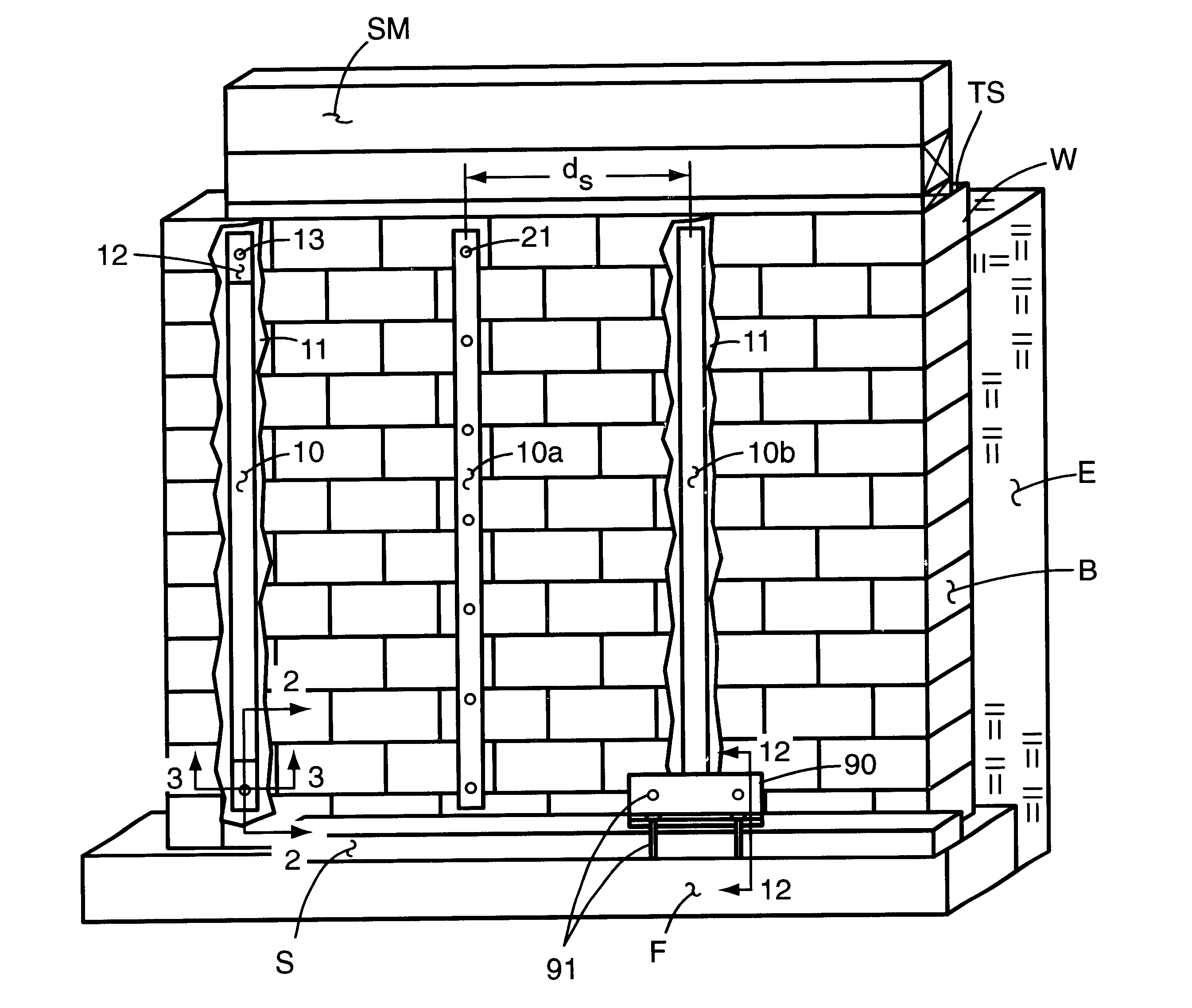Wall reinforcement apparatus and method using composite materials
a technology of wall reinforcement and composite materials, applied in the field of wall reinforcement, can solve the problems of a costly and time-consuming procedure, a structurally inadequate structure, and a high probability of serious damage or possibly catastrophic failure,
- Summary
- Abstract
- Description
- Claims
- Application Information
AI Technical Summary
Benefits of technology
Problems solved by technology
Method used
Image
Examples
Embodiment Construction
Referring to the drawings, and in particular to FIG. 1 for this introductory description of an exemplary installation, a portion of a typical basement wall W of a residential building is shown as constructed in the known customary environment. That environment includes a footer F commonly fabricated from concrete and extending around the periphery of the building's excavation. It is normally rectangular in cross-section with an upper horizontal surface of greater width than the wall's thickness with the wall being built on that surface. The wall has a vertically extending interior surface IS and an outwardly facing exterior surface (not shown) which abuts the earth E that is filled in the excavated space after the wall is constructed. This earth illustrated in FIG. 1 is to be understood as being a continuation of a larger body of earth that surrounds the building, and provides the horizontal forces directed laterally against the wall's exterior surface. Recognition must also be give...
PUM
| Property | Measurement | Unit |
|---|---|---|
| Force | aaaaa | aaaaa |
| Viscosity | aaaaa | aaaaa |
| Adhesion strength | aaaaa | aaaaa |
Abstract
Description
Claims
Application Information
 Login to View More
Login to View More - R&D
- Intellectual Property
- Life Sciences
- Materials
- Tech Scout
- Unparalleled Data Quality
- Higher Quality Content
- 60% Fewer Hallucinations
Browse by: Latest US Patents, China's latest patents, Technical Efficacy Thesaurus, Application Domain, Technology Topic, Popular Technical Reports.
© 2025 PatSnap. All rights reserved.Legal|Privacy policy|Modern Slavery Act Transparency Statement|Sitemap|About US| Contact US: help@patsnap.com



